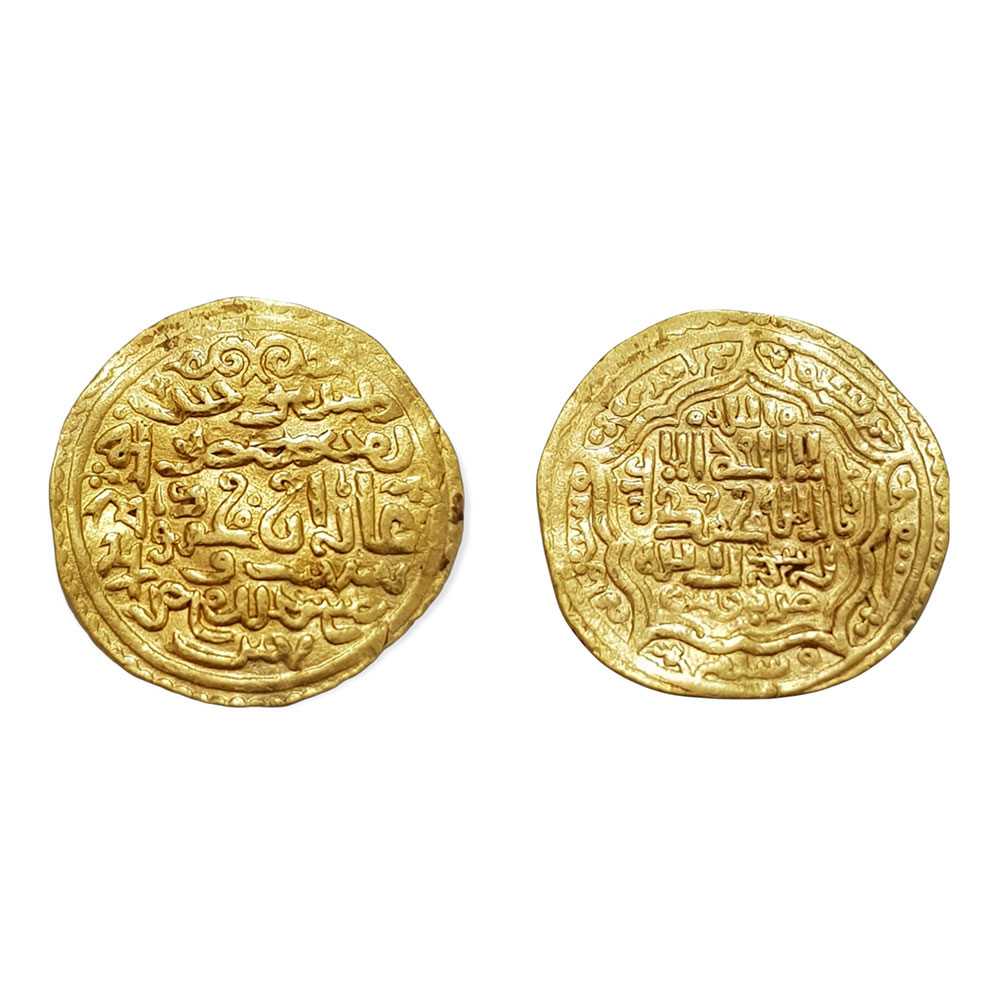
Mahmud Ghazan (5 November 1271 – 11 May 1304) (Persian: غازان خان, Ghazan Khan, sometimes archaically spelled as Casanus by the Westerners[2]) was the seventh ruler of the Mongol Empire‘s Ilkhanate division in modern-day Iran from 1295 to 1304. He was the son of Arghun, grandson of Abaqa Khan and great-grandson of Hulagu Khan, continuing a long line of rulers who were direct descendants of Genghis Khan. Considered the most prominent of the Ilkhans, he is perhaps best known for converting to Islam and meeting Imam Ibn Taymiyya in 1295 when he took the throne, marking a turning point for the dominant religion of the Mongols in Western Asia (Iran, Iraq, Anatolia and Transcaucasia). One of his many principal wives was Kököchin, a Mongol princess (originally betrothed to Ghazan’s father Arghun before his death) sent by his great-uncle Kublai Khan.
Military conflicts during Ghazan’s reign included war with the Egyptian Mamluks for control of Syria, and battles with the Turko-Mongol Chagatai Khanate. Ghazan also pursued diplomatic contacts with Europe, continuing his predecessors’ unsuccessful attempts at forming a Franco-Mongol alliance. A man of high culture, Ghazan spoke multiple languages, had many hobbies, and reformed many elements of the Ilkhanate, especially in the matter of standardizing currency and fiscal policy.
As part of his conversion to Islam, Ghazan changed his first name to the Islamic Mahmud, and Islam gained popularity within Mongol territories. He showed tolerance for multiple religions, encouraged the original archaic Mongol culture to flourish, tolerated the Shiites, and respected the religions of his Georgian and Armenian vassals. Ghazan therefore continued his forefather’s approach toward religious tolerance. When Ghazan learned that some Buddhist monks feigned conversion to Islam due to their temples being earlier destroyed, he granted permission to all who wished to return to Tibet, Kashmir or India where they could freely follow their faith and be among other Buddhists.[61] The Mongol Yassa code remained in place and Mongol shamans remained politically influential throughout the reign of both Ghazan and his brother and successor Oljeitu, but ancient Mongol traditions eventually went into decline after Oljeitu’s demise.[62] Other religious upheaval in the Ilkhanate during Ghazan’s reign was instigated by Nawruz, Ghazan put a stop to these exactions by issuing an edict exempting the Christians from the jizya (tax on non-Muslims),[63] and re-established the Christian Patriarch Mar Yaballaha III in 1296. Ghazan reportedly punished religious fanatics who destroyed churches and synagogues in Tabriz on 21 July 1298.[64]
Ghazan was a man of high culture, with many hobbies including linguistics, agro-techniques, painting, and chemistry. According to the Byzantine historian Pachymeres (1242–1310): “No one surpassed him, in making saddles, bridles, spurs, greaves and helmets; he could hammer, stitch and polish, and in such occupations employed the hours of his leisure from war.”[66] Ghazan spoke numerous languages, including Chinese, Arabic, and “Frank” (probably Latin), as well as his own native language Mongolian.[67]
In addition to his religious deep impact on Persia, Ghazan had unified measures, coinage and weights in the Ilkhanate. He ordered a new census in Persia to define the Dynasty’s fiscal policy. He began to reuse wilderness, non-producing and abandoned lands to raise crops, strongly supporting the use and introduction of Eastern Asian crops in Persia, and improved the Yam system. He constructed hostels, hospitals, schools, and posts. Envoys from the court received a per diem stipend, and those of the nobility traveled at their own expense. Ghazan ordered only envoys bearing urgent military intelligence to use the staffed postal relay service. Mongol soldiers were given iqtas by the Ilkhanid court, where they were allowed to gather revenue provided by a piece of land. Ghazan also banned lending at interest.[68]
Ghazan reformed the issuance of jarliqs (edicts), creating set forms and graded seals, ordering that all jarliqs be kept on file at court. Jarliqs older than 30 years were to be cancelled, along with old paizas (Mongol seals of authority). He fashioned new paizas into two ranks, which contained the names of the bearers on them to prevent them from being transferred. Old paizas were also to be turned in at the end of the official’s term.
In fiscal policy, Ghazan introduced a unified bi-metallic currency including Ghazani dinars, and reformed purchasing procedures, replacing the traditional Mongol policy on craftsmen in the Ilkhanate, such as organizing purchases of raw materials and payment to artisans. He also opted to purchase most weapons on the open market.
On coins, Ghazan omitted the name of the Great Khan, instead inscribing his own name upon his coins in Iran and Anatolia. But he continued to diplomatic and economic relations with the Great Khan at Dadu In Georgia, he minted coins with the traditional Mongolian formula “Struck by the Ilkhan Ghazan in the name of Khagan” because he wanted to secure his claim on the Caucasus with the help of the Great Khans of the Yuan Dynasty.[69] He also continued to use the Great Khan’s Chinese seal which declared him to be a wang (prince) below the Great Khan.[70]
His reforms also extended to the military, as several new guard units, mostly Mongols, were created by Ghazan for his army center. However, he restricted new guards’ political significance. Seeing Mongol commoners selling their children into slavery as damaging to both the manpower and the prestige of the Mongol army, Ghazan budgeted funds to redeem Mongol slave boys, and made his minister Bolad (the ambassador of the Great Khan Kublai) commander of a military unit of redeemed Mongol slaves.
